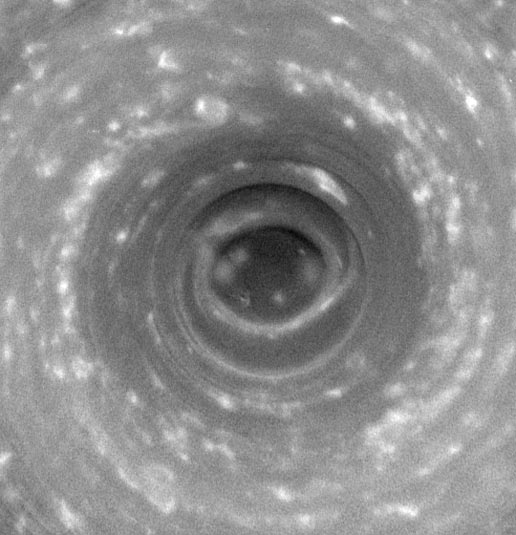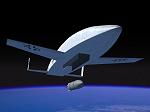At last, a blog entry regarding an NPR story that does not wrap up with me foaming at the mouth. Morning Edition ran a story today on a Mennonite community in Chihuahua, Mexico famous for their cheese. It’s an interesting tale with a (tenuous) personal connection – a lot of Mennonite blood flows through my veins. The Chihuahuan community came from northern Germany via Russia and Manitoba; my connection is through my mom – German/Swiss via Ontario. Hey, Heidi the Hick – mom’s maiden name = Lehman, granma’s maiden name = Wideman, both born in Markham, Ont. – I’m betting some of those names ring bells for you… I’m also told that, coincidentally, on my dad’s side there’s a bunch of Indiana Mennonite heritage, but I know less about that.
Monthly Archives: November 2006
Syd Barrett estate auction
Some interesting stuff from the late Syd Barrett’s estate is being auctioned off. I’m still trying to figure out exactly how this works, but it looks like you can place absentee bids via an eBay account. The auction itself is tomorrow at 7AM EST. I’m tempted by a couple of items… (via MeFi)
Happy Thanksgiving
A pre-schooler’s turkey story:
I know they walk. Well, well they walk on the street. Well, they walk to get to the other side. They are going to their homes. They live in the grass. They eat turkey or maybe yummy cheese or maybe something clean or maybe something yucky. To catch a turkey my Dad would use a net. He has really power hands. He throws the net and then he grabs the feet. He gets tired when he runs out of power. But some heroes don’t get tired. Moms gotta cut the feathers off the turkey. You do it with scissors. Mom doesn’t catch a turkey. She’s not very good at catching things. She cooks it in the oven for five minutes. All of us eat it.
Sousveillance, Kramer, Tasers and the Panopticon
A couple of recent incidents have me thinking about the surveillance society again. The incidents:
- November 14th a University of California Police Department officer tasered a student in UCLA’s Powell library.
- November 19th (I think – the news was racing around the web on the 20th) Michael Richards – Kramer of Seinfeld – melted down while doing a standup routine at a club in Hollywood.
The key factor that unites these disparate messes? They were caught on video by bystanders (a quick YouTube search should turn both up – I’ll leave that as an excercise for the student). Though it’s often useful to concentrate on one aspect of technological change – in this case the panopticon (and in his defense Charlie Stross’ Great Britain is leading the way in ubiquitous surveillance) there are almost always countervailing forces and unintended consequences that get in the way. Opportunistic sousveillance may be be one of those forces. As video recording hardware gets smaller and more ubiquitous – cell phones, lipstick cams, etc. – and video distribution gets easier no one will have a monopoly on showing the world images of folks behaving badly. Not only will Cletus show up on ‘Cops’ when his meth lab gets raided, but additionally YouTube will have footage of Officer Friendly overreacting during a traffic stop.
I’ll continue to mull – sousveillance is no panacea. The state still has access to databases, facial recognition software (which – as far as I can tell – still sucks), etc. I continue to think transparency will keep free societies free, but part of me wants to prep an escape route – be ready go nomad and drop into a mobile cash/barter society that I think is already out there…
Rattus norvegicus
Rats are fascinating. A few species of rat have colonized niches provided by agrarian and industrial human societies; I blogged earlier in the year about the Polynesian rat and Easter Island – now it’s the wharf rat (my favorite name for R. norvegicus) and England’s turn. So… here’s a rat-catcher’s link farm:
- A really good book on ratting, Tales of a Rat-Hunting Man – part of Lyons and Burford’s ‘Wilder Places’ series. Any ‘Wilder Places’ title that you can find is guaranteed to be a good read – they were selected by Stephen Bodio.
- A link courtesy of Reid Farmer (on the Querencia blog) to Patrick Burns. Mr. Burns shows us an interesting connection between the rat pits of Victorian London and modern medicine.
- Finally – Full Revelations of a Professional Rat-catcher After 25 Years’ Experience – an electronic version(s) of an 1898 book by Ike Mathews.
…the only advantage to the mongoose being that all the Rats it kills it will bring back dead to it’s habitation, and that stops the dead Rats from smelling under the floors.
*
*
Update (11/29) – a great post on Patrick Burn’s site – R. norvegicus prevents plague!
Site outages
Occasionally you may have trouble getting at my blog. I host the site myself – at home – so when the power goes out for a while, or my cable goes out or any number of other things happen -> the blog goes dark. Keep checking – sooner or later I’ll be back.
The DoaMNH technical mini-FAQ:
Q: Why host the site yourself?
A: Um… seemed like a good idea at the time? Actually, I like the feeling of accomplishment I get – additionally, throwing WordPress software on the server I was already running was not a big deal.
Q:Why is it slow?
A: Because US broadband providers don’t get it. They think of residential customers as consumers – passive web surfers – rather than folks who both use and produce info. Bandwidth inbound (from the web to me) is approx. 8Mb/s; outbound (my blog to your browser) is about 750 Kb/s.
Q: So what are you running?
A: From the bottom up:
- Mini-ITX based server (low power consumption) – VIA EPIA SP13000 mobo w/ 512M of RAM and 2 120Gb SATA drives. Parts from Logic Supply.
- SME Server Version 7 – a great, easy to use Linux server distribution. It’s absolutely perfect for a home server.
- WordPress 2.x blogging software with a bunch of plug-ins.
Probably more than you wanted to know.
Briony Morrow-Cribbs
Storm at Saturn’s south pole
This doesn’t need any comment from me…
A movie taken by Cassini’s camera over a three-hour period reveals winds around Saturn’s south pole blowing clockwise at 550 kilometers (350 miles) per hour. The camera also saw the shadow cast by a ring of towering clouds surrounding the pole, and two spiral arms of clouds extending from the central ring. These ring clouds, 30 to 75 kilometers (20 to 45 miles) above those in the center of the storm, are two to five times taller than the clouds of thunderstorms and hurricanes on Earth.
Eye-wall clouds are a distinguishing feature of hurricanes on Earth. They form where moist air flows inward across the ocean’s surface, rising vertically and releasing a heavy rain around an interior circle of descending air that is the eye of the storm itself. Though it is uncertain whether such moist convection is driving Saturn’s storm, the dark “eye” at the pole, the eye-wall clouds and the spiral arms together indicate a hurricane-like system. *
Rockets and some autobiography
A few days ago, I indulged my curiosity by doing a little web searching for unrealized spacecraft designs – I was motivated by having read Project Orion recently. The Orion designs relied on nuclear impulse power; they would chuck a shaped-charge nuclear bomb behind them, touch it off, and absorb the energy using a pusher plate, shock absorbers and a massive ship/payload. While noodling around I ran across a Nazi secret weapon project I’d never heard of before: Dr. Eugen Sanger’s Amerika Orbital bomber.
Reading about how this thing was to be launched, all I could think of was my favorite childhood TV show. A bit of background – the year I was to start school, my family moved to Newport, Wales for a year so instead of first grade, it was Infant’s One for me. Lest you think that I spent my time in Wales zoned out in front of the tube – well, it was different then (and there). If I recall correctly – no guarantees – there was one channel, it wasn’t broadcasting all the time and a significant portion of the programming was in Welsh. My time in Newport cemented my love of the outdoors and started my bibliomania; my teacher gave me a copy of this book as a going away present when we left to return to Phoenix (AZ). There was one thing on the telly (couldn’t resist) that I loved: Gerry Anderson’s Fireball XL5. If you’re not familiar with him, Mr. Anderson is the guy behind Supermarionation and shows like Thunderbirds and Stingray. Fireball XL5 was one of his earlier efforts; the eponymous rocketship was launched by – you guessed it – being propelled down a long track by a rocket sled. Convergent evolution or had Anderson or one of his people heard of Sanger’s work? You got me. I can tell you that World War II was still echoing in Great Britain in the early sixties in a way it definitely was not in the US. I started building plastic model airplane kits (Airfix!) while we were in Wales – Spitfires and Lancaster bombers were all I remember – no Vulcans, nothing contemporary. Who knows, but in any event, a good excuse for me to turn the clock back. I don’t miss the school uniform though!
Rosamond Purcell (and Ricky Jay)
The Athanasius Kircher Society gives us a head-up on a very nice slide show on Slate devoted to the photographs of Rosamond Purcell. I realized while looking at the photographs that I’d seen a couple of the images before, without paying enough attention to the person making the art – I won’t make that mistake again (I hope) w/ Ms. Purcell’s work. One place you can go to see more is the Museum of Jurassic Technology’s exhibit of Ricky Jay’s decaying dice. Enjoy!

Update – Purcell links abound! Here’s one from the Boston Globe. (via BoingBoing)
Word of the day
Flopsweat – n. Theater. nervous perspiration caused by fear of failure before an audience. From “Random House Historical Dictionary of American Slang, Volume 1, A-G” by J.E. Lighter, Random House, New York, 1994. This earliest citation in this reference is: 1966 Susann “Valley of the Dolls” 292: The applause had been deafening on her entrance, but after ten minutes the air was heavy with “flop sweat.”
OK, let’s use it in a sentence (this line is what made flopsweat today’s word). Via the apostate Balloon Juice blog,
Unsurprisingly, practically everybody involved with the glorious clusterf*ck in Iraq has switched into desperate damage-control mode. Michael Leeden’s [sic] personal dodge (Supported the invasion? You must mean some other Michael Leeden) is particularly funny for its mix of mendacity and flopsweat.”









